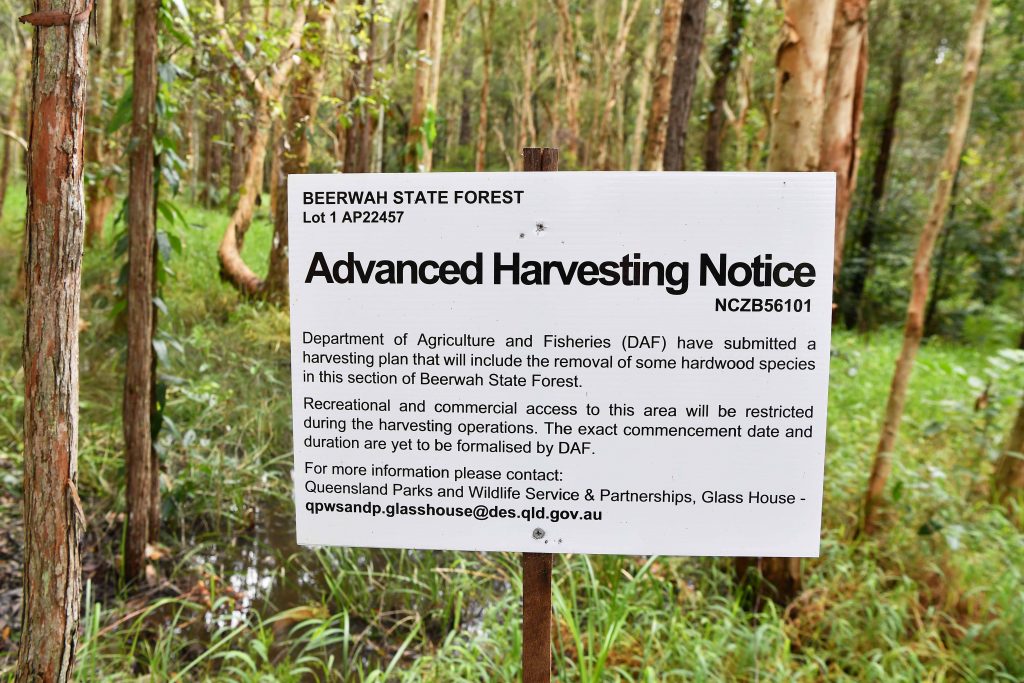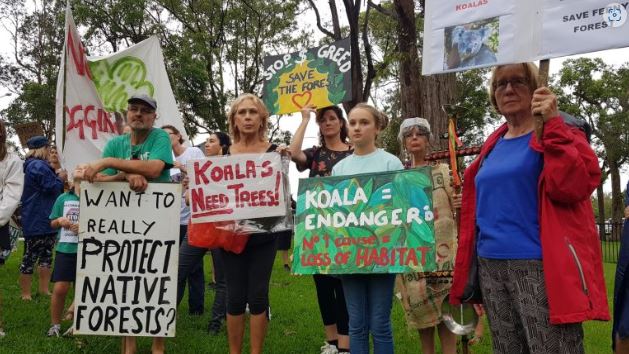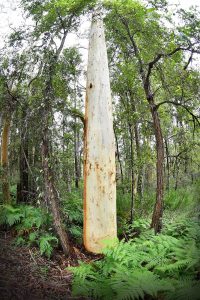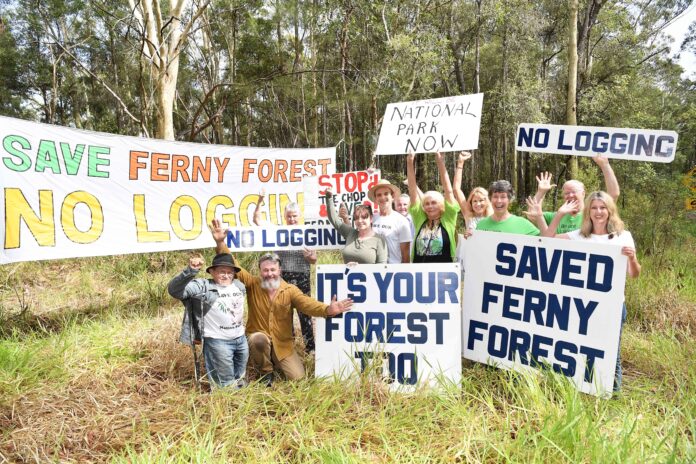People power has nudged the Queensland Government into a backflip on a final logging proposal and towards taking the first step in protecting significant sections of Sunshine Coast state forest.
As a result, crucial habitat for native species, including koalas, will be conserved – and earlier than expected.
Environment Minister Meaghan Scanlon made the announcement on Wednesday, December 14, that a number of state forests across South-East Queensland would be conserved earlier as part of the government’s election commitment to transfer 20,000 hectares to Queensland’s protected areas.
The transfers will include Deer Reserve (centred on Mount Brisbane, and protecting sections of the catchments of the Stanley and Brisbane rivers which supply water to Somerset and Wivenhoe dams), West Cooroy, Beerwah Forest Reserve and Ferny Forest.
The wider community has been particularly opposed to logging Ferny Forest: a 130-hectare section of Beerwah State Forest that forms a native corridor between Ewen Maddock Dam wetland and the protected Mooloolah River National Park.
The diverse forest was due to transition to a “protected area” in 2024, when logging of all native forests will end under the SEQ Forests Agreement, struck in 1999.

But before then, the State Government was proposing one final “selective harvest”, targeting species such as blackbutt, white stringybark, tallowwood, red mahogany, grey iron bark, flooded gum, turpentine and grey gum.
That proposal drew a protest in March this year in Landsborough, bringing together concerned residents including bushwalkers, mountain bikers, environmentalists and Sunshine Coast local councillor Rick Baberowski.
Members of the group waved posters, banged drums and marched in a public show of opposition.
But the DAF has confirmed Ferny Forest has now been taken off the timber-harvesting schedule and will be transitioned into the conservation estate “by the end of 2024”.

Sunshine Coast Environment Council (SCEC) and Save Ferny Forest community protest group, which both strenuously opposed the logging, have welcomed the announcement, with SCEC liaison and advocacy officer Narelle McCarthy describing it as “a fantastic first step toward the protection that our Sunshine Coast native forests and wildlife need”.
“This win is testament to what can be achieved with people power,” she said.
“The community rose up to fight the planned logging, and fight for local people and visitors to enjoy this amazing forest into the future.
“We maintained the significant conservation, cultural and social values of this forest are essential to our region’s biodiversity, culture and liveability and needed to become part of the conservation estate without being subjected to a harvest operation.
“With the rampant, unsustainable urbanisation of the Sunshine Coast, it is more urgent than ever to conserve biodiversity, protect threatened species, sequester carbon and connect people with nature.
“We commend the Department of Environment and Science for their leadership in identifying the importance of this forest within an expanded Protected Area estate and its key role as a part of bioregional wildlife corridor.”

Minister Scanlon said Queensland was home to more than 14 million hectares of protected area – double the size of Tasmania.
“We’re building on that massive number with today’s announcement and a record $262.5 million to expand and create new national parks,” she said.
“The transfer of the forests will ensure they’re conserved by legislation, while also ensuring that public access remains and people can continue to enjoy these beautiful areas.”
Ms Scanlon said the forests would go through a formal process to be added to the conservation estate, which will include engaging with the Traditional Owners of the state forest lands.
But Ms McCarthy warned much work still needed to be done.
“We have high conservation-value state forest in the Southeast Queensland planning region, but more than 40,000ha of this precious habitat is still on logging schedules.
“Deongwar, Yabba, Benarkin, Squirrel Creek – each of these forests are full of hollow bearing trees and invaluable for wildlife. We must protect them now.”
For further information about native timber harvesting in Queensland, visit https://www.daf.qld.gov.au/business-priorities/forestry/state-native and https://daf.engagementhub.com.au/seq-forestry-harvest





